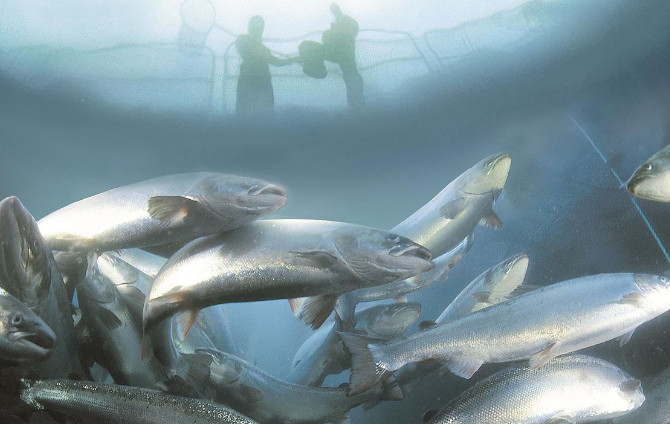|

Image: FHF / FIS
How is the salmon really?
 (NORWAY, 1/13/2023)
(NORWAY, 1/13/2023)
Two new FHF-funded projects are now starting to develop new methods that can provide answers about how farmed salmon are really faring.

Photo: FHF
It is in the nature of fish that they should not show signs of weakness and disease. Any that show signs of weakness quickly become prey and are eaten by other fish or predators. In farming, it is important to know if a salmon population is in reduced health so as not to expose the fish to stressful conditions, such as lice removal, before they have recovered. The goal of the two new projects is to develop tools so that farmers can measure the health of fish, and preferably without having to kill them. These are what we call wellness indicators, and there is a strong desire in the industry to produce better tools in this field.
Blood test
.jpg)
Photo: NMBU
When humans don't feel quite right, we have a talk with the doctor who can take various measurements to find out what's wrong. It is not that easy to communicate with the fish, so such analyzes become even more important in order to be able to say something about how the fish are really doing. Blood tests are widely used in humans and animals, but little used in fish due to the lack of reference values and parameters adapted to fish. Therefore, improving blood tests for fish is the aim of the project "Blood chemistry as decision support in aquaculture (INDIKATOR)". This project is run by NMBU and more information can be found here.
Non-lethal welfare indicators
The second project is led by Møreforskning with the title "Non-lethal diagnostic indicators for better decision support in the agricultural industry". Today, histology is normally used to say .jpg) something about the condition of the fish's heart or gills, and such analyzes require the fish to be euthanized. Therefore, the goal of this project is to develop new diagnostic tools to say something about how the fish is doing without having to kill it, ie non-lethal. One should, among other things, look for markers in the mucus, that is, take samples of the fish's mucus on the skin and gills. Ultrasound of internal organs combined with artificial intelligence (AI), as well as behavior monitoring with cameras, are other possibilities that will be explored. The future goal is of course to get quick and easy analyzes that can be carried out at the edge of the cage. something about the condition of the fish's heart or gills, and such analyzes require the fish to be euthanized. Therefore, the goal of this project is to develop new diagnostic tools to say something about how the fish is doing without having to kill it, ie non-lethal. One should, among other things, look for markers in the mucus, that is, take samples of the fish's mucus on the skin and gills. Ultrasound of internal organs combined with artificial intelligence (AI), as well as behavior monitoring with cameras, are other possibilities that will be explored. The future goal is of course to get quick and easy analyzes that can be carried out at the edge of the cage.
Better tools for measuring fish welfare have long been high on the FHF's agenda, and there are many past and ongoing projects in this field. Blue. The BIORELEVANS project is working on the development of automated salmon welfare records in aquaculture. Here you can see i.a. about whether the respiratory rate of the fish can reveal the stress level of the fish.
"I am optimistic that researchers will come up with new and better tools to be able to say something objective about the health status of the fish. The goal, of course, is not just to measure the welfare of the fish, but to improve it, and then the measurements and knowledge are an important step along the way,", says Renate Johansen, Head of Department at FHF.
Source: FHS
[email protected]
www.seafood.media
Information of the company:
|
Address:
|
Tollbugata 32
|
|
City:
|
Oslo
|
|
State/ZIP:
|
(NO-0103)
|
|
Country:
|
Norway
|
|
Phone:
|
+47 23 89 64 08
|
|
Fax:
|
+47 23 89 64 09
|
|
E-Mail:
|
[email protected]
|
More about: 
|
|



